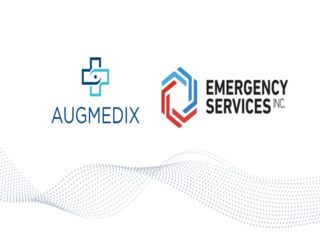Steven Loeb and Bambi Francisco Roizen speak with Manny Krakaris, CEO of Augmedix, a provider of ambient AI medical documentation and data solutions. The company was recently acquired a provider of technology to healthcare systems in an all-cash transaction that valued Augmedix at approximately $139 million.
Highlights from the call:
0:32 – Krakaris discusses his career and what led him to Augmedix: Krakaris started out in banking before joining a digital music distribution company and then going to work at a variety of technology companies ranging from semiconductors to enterprise software to solar module manufacturing. The common theme of his career is that he was brought in by boards represented by venture capitalists to help them fix companies. That could be anything from restructuring a company, figuring out how to scale a company, all the way to selling a company.
5:20 – joining Augmedix: Augmedix was Krakaris’ first healthcare company and he was brought in to scale the business and build a meaningful and lasting company which meant automating as much of the medical documentation process as possible. What the company had done up until he arrived was pioneer the concept of repurposing the ambient conversation that goes on between a doctor and a patient and using that as the primary input source to generate a medical note. By repurposing that conversation and using that as the input, it allows the doctor to interact naturally with the patient, and take that interaction and use that with some clever technology to create a medical note. 11 years ago, Augmedix pioneered this concept.
12:50 – Augmedix’s products: There are different products to address the different needs within the marketplace. Its traditional product, Live, still exists today, where a medical documentation specialist is matched up one-on-one with a clinician; that is a real time, synchronous service and the legacy product that ut has had from the formation of the company. Then it has fully automated AI products, Go, which is a pure self-serve product where there is no human in the loop other than the doctor themselves and they get a draft of the medical note almost instantaneously. Then it has an intermediate product called Go Assist where the doctor has the flexibility to invoke a medical documentation specialist whenever they need it, so they can push a button and have that draft node go to one of its specialists for review, and then they get it gets sent to the EHR for the doctor’s final sign off.
19:45 – Commure acquisition: The overarching vision that prompted Commute to want to buy Augmedix was the complementarity of their product portfolios. They do something that is different from what Augmedix does: even when it comes to AI medical documentation, they’re focused on a different segment of the market and the company believes that if you’re going to sell into large hospital systems, having both is better than having just one. Big healthcare systems are increasingly wanting to reduce the number of vendors that they deal with: the average number of vendors of a typical hospital system is 2,000, so there’s going to be rationalization of vendors, and one stop shops are going to become more common, but you’ve got to have the product suite to be able to fit that criterion. The vision of the Commure was that the acquisition is a way to broaden the portfolio so to make sure that they’re that one stop shop for many big healthcare enterprises.
27:59 – Alleviating burnout: The two biggest issues Augmedix hears from its customers in the big healthcare enterprises are physician burnout and patient access. There’s a lot of cognitive burden associated with having to deal with those administrative tasks: it’s more than just checking the box, there’s a lot more that goes into it that burdens a clinician. What it has done with the product, which focuses on documenting what occurs during the encounter, is to be invisible to the clinician and the patient, so its solutions and products that are unobtrusive, don’t invade upon or trespass upon the natural encounter between a doctor and a patient. By doing that, it enables a higher level of quality of interaction between the doctor and the patient. Doctors want that, and patients want that.
38:41 – ROI: When Augmedix goes into an enterprise, it typically gets a data sharing agreement, where it asks for access to two pieces of data on each one of the clinicians at that enterprise, their WRV use and the average amount of time they spend in the EHR per visit. It maps everybody on a grid according to those two criteria, and then plots what the productivity improvement curve looks like after they adopted the service. Historically, it found with the enterprises that have participated in these programs is that our curve is quite accurate in terms of predicting what to expect and that for every $3 that is spent on itsservice, the healthcare system can expect to get a little over $7 in return.

















